After wildfire, a Santa Barbara garden reborn
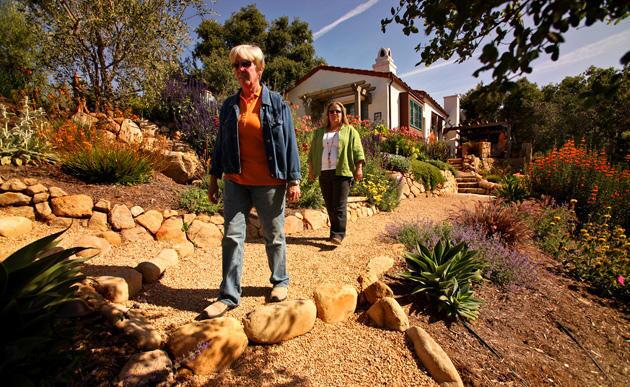
Dawn Close, left, and Margie Grace, principals of Grace Design Associates in Santa Barbara, walk one of the new paths at the Johnsons’ home. Grace, who oversees design of the firm’s projects, said she wanted to create a garden that reduced future fire threat, required little watering and provided habitat for butterflies, birds and other wildlife. (Al Seib / Los Angeles Times)
The Tea wildfire of 2008 destroyed more than 200 homes in the Santa Barbara area and roared up a hill within a few feet of Eden Johnson’s house. The Spanish-style structure was saved, but the garden was little more than scorched earth. Johnson and her husband, Kevin Jenkins, turned to Grace Design Associates for help bringing the landscape back to life.
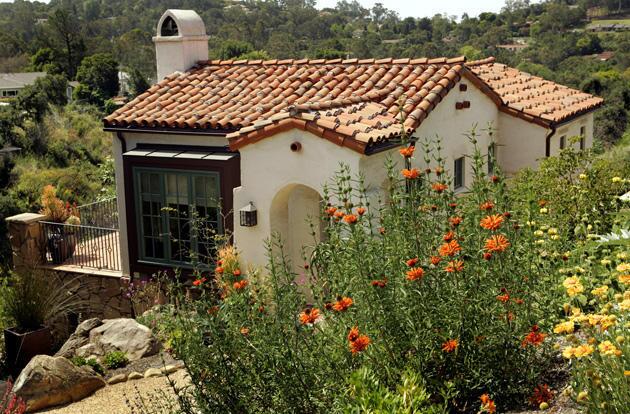
Grace said she also suggested to her client that she close her eyes and picture a garden. What she saw: lots of color, a place to grow vegetables and a spool – something larger than a spa but smaller than a pool. We’ll see that later. Pictured here: some of the color built into the landscape, in the form of orange lion’s tail and yellow gaillardia. (Al Seib / Los Angeles Times)
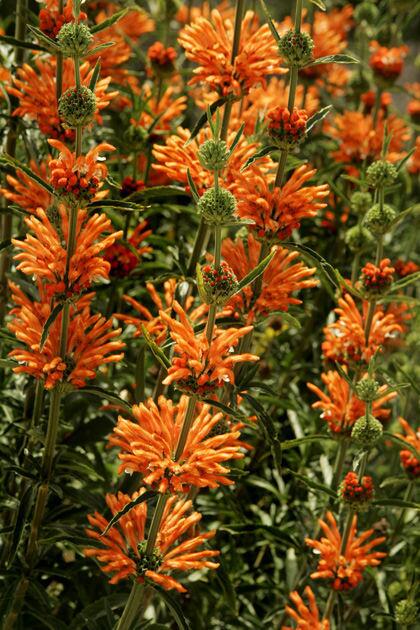
Lion’s tail is a South African plant that needs little water and blooms with bright flowers that feel like fur. (Al Seib / Los Angeles Times)
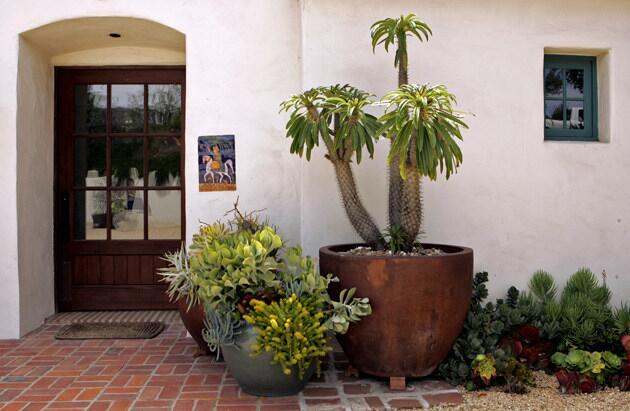
Most of the property is sloped, and one of the few flat pads is narrow ring around the house. By the entrance, Grace wanted to use sculptural plants against the white wall. Container arrangements allowed her to play with form, tones and height without resorting to the kind of thick planting that could fuel a fire. The spiny plant in the largest pot is Madagascar palm, which can handle the beating sun. (Al Seib / Los Angeles Times)
Advertisement
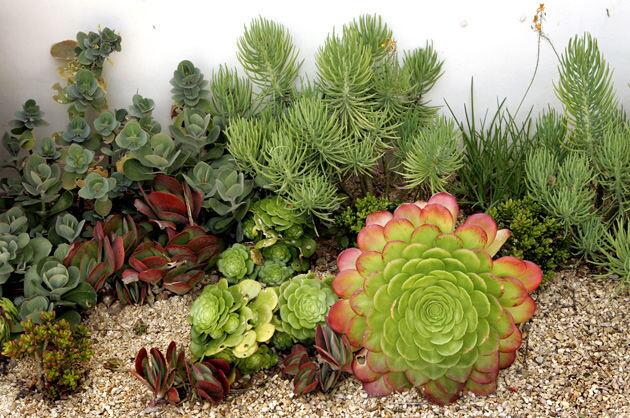
Succulents by the entrance also provide texture and color. The plants store water in their leaves, so they’re drought tolerant and fire resistant. (Al Seib / Los Angeles Times)
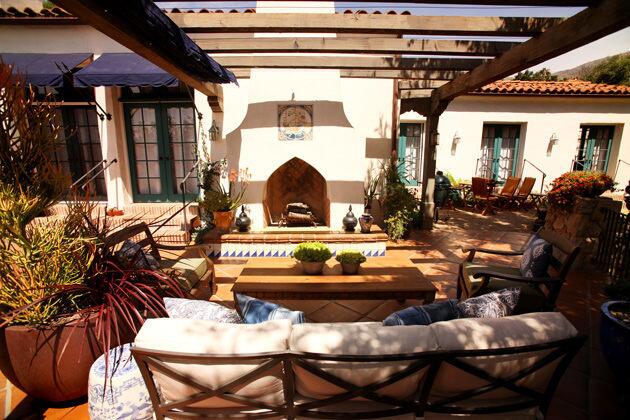
An outdoor living room behind the house has a canvas shade that can be pulled across for sun protection. (Al Seib / Los Angeles Times)
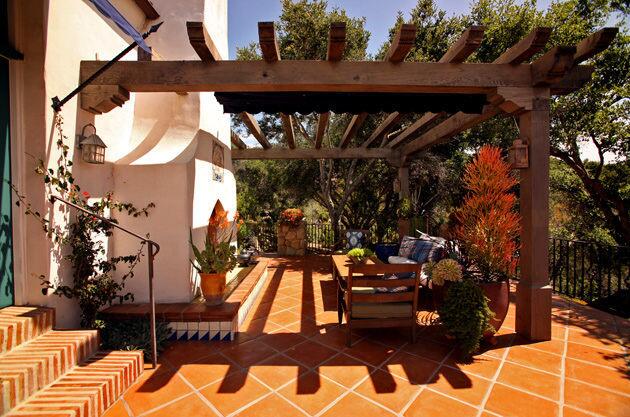
Another view of the living area. The rest of the sloping backyard sits below the railing. (Al Seib / Los Angeles Times)
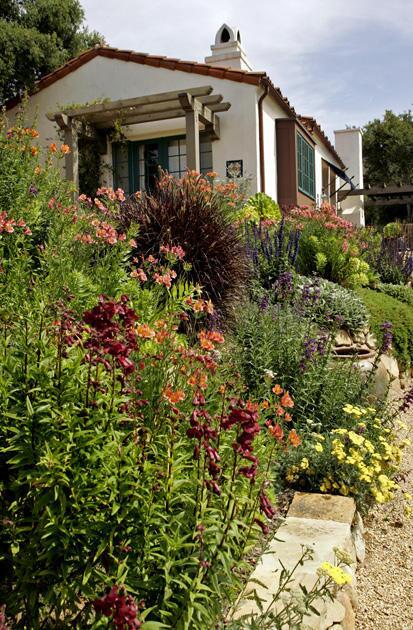
To one side of the house, Grace chose “unthirsty” perennials that provided the color and cut flowers that the client wanted. “I also wanted some good nectar-producing plants for bees,” the designer said. The result is a mix of alstroemeria, penstemon, catmint and a type of
Advertisement
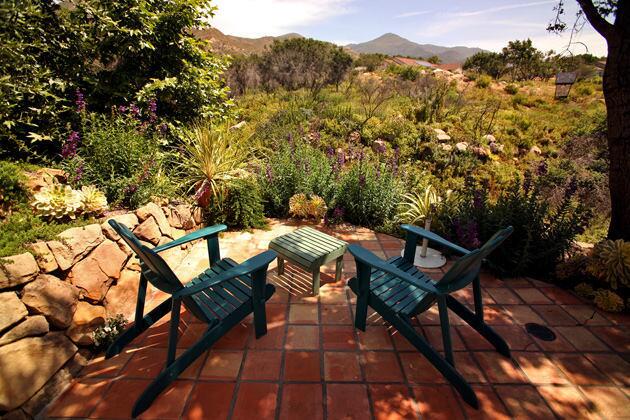
The view from that patio: a naturalistic landscape that blends into the wild lands beyond. Part of the goal in the landscaping: avoiding plants that burn easily and create embers that might spread flames to the house. (Al Seib / Los Angeles Times)
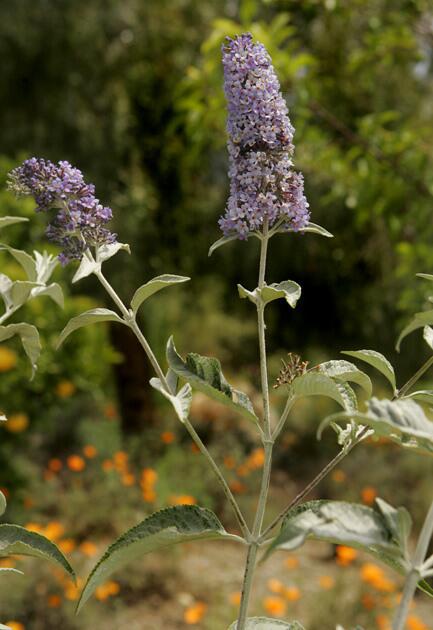
Butterfly bush, whose botanical name is buddleja. (Al Seib / Los Angeles Times)
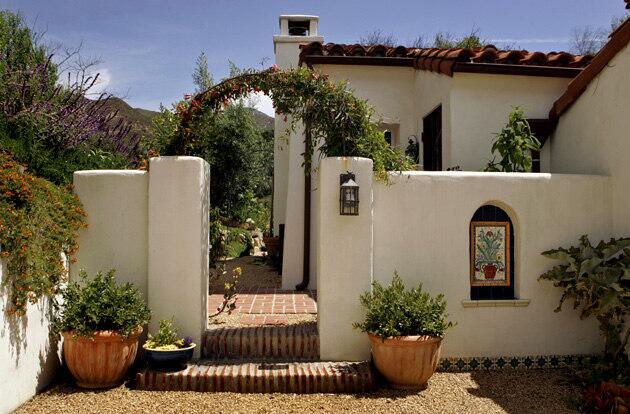
Pots and an arbor provide more flora at varied heights by a path running along one side of the house. The owners had been living in the house only a few months when the 2008 fire hit; look at the landscape today, and you’d see few clues of the past disaster. (Al Seib / Los Angeles Times)
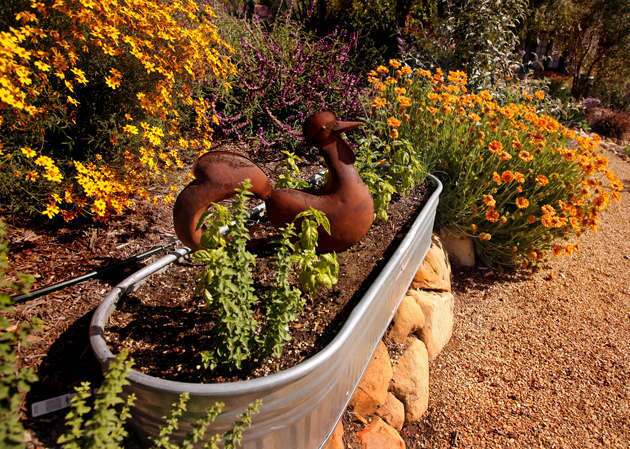
Raised beds for vegetables and herbs have been incorporated into the design, surrounded here by yellow gaillardia and purple Mexican bush sage. (Al Seib / Los Angeles Times)
Advertisement
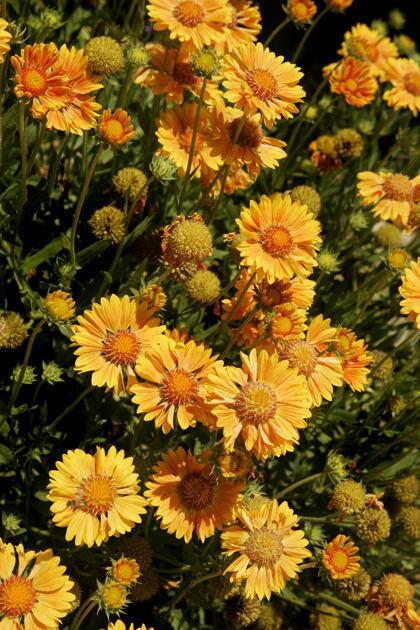
Gaillardia. (Al Seib / Los Angeles Times)
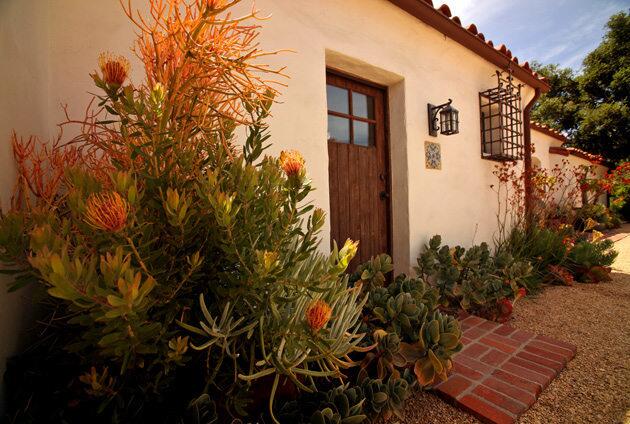
More succulents next to the house, with a gravel border serving as a fire break. (Al Seib / Los Angeles Times)
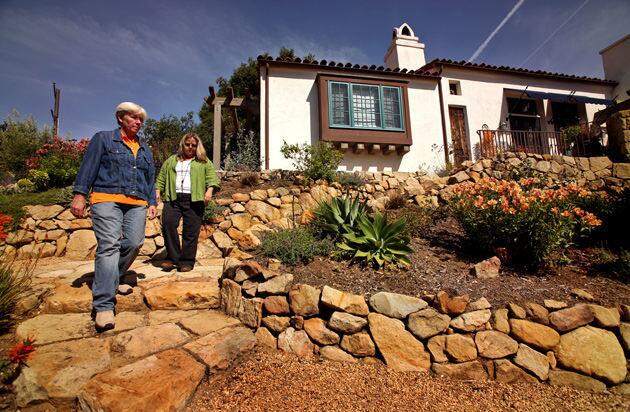
Close and Grace head down steps leading into the yard behind the house. (Al Seib / Los Angeles Times)
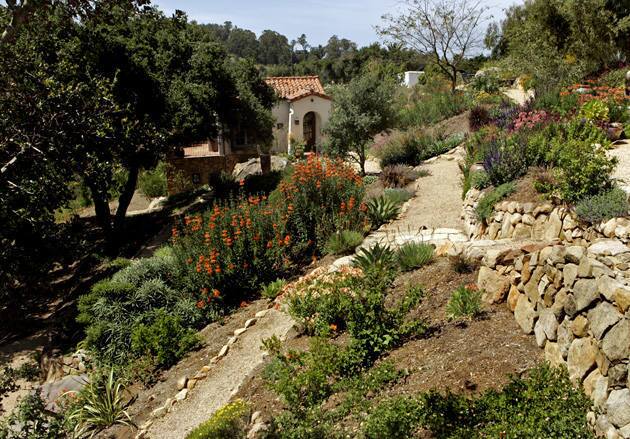
Paths run across a slope planted with low-water, low-maintenance flora. Photographed about eight months after planting was completed, the garden will fill in without creating the kind of highly flammable brush that fueled the 2008 fire. (Al Seib / Los Angeles Times)
Advertisement
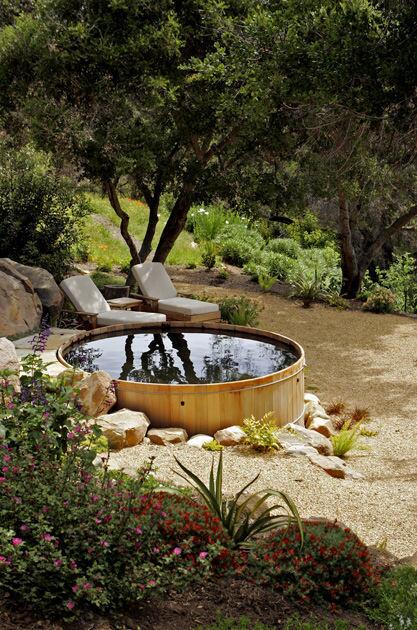
The “spool”: Smaller than a swimming pool but larger than your typical spa, the water feature is actually a converted galvanized horse tank. It’s not heated like a spa, but rather used as a place to soak on summer’s hottest days. It’s also an emergency source of water. (Al Seib / Los Angeles Times)
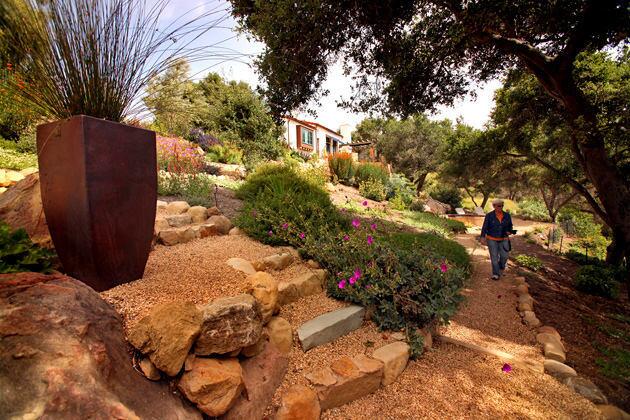
The paths are 3/8-inch crushed gravel, a rough-edged rock selected because it doesn’t roll underfoot. (Al Seib / Los Angeles Times)
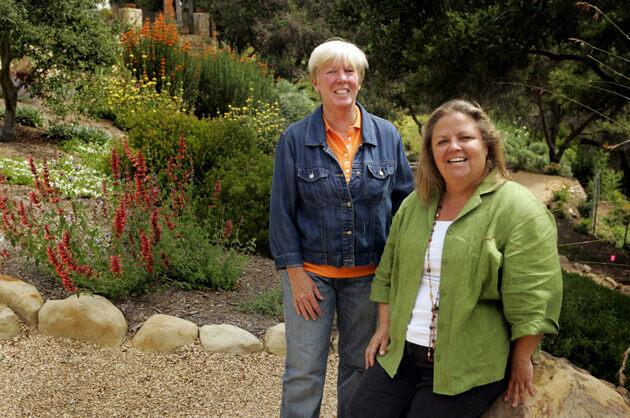
Close, left, and Grace, in the garden that their firm installed. (Al Seib / Los Angeles Times)
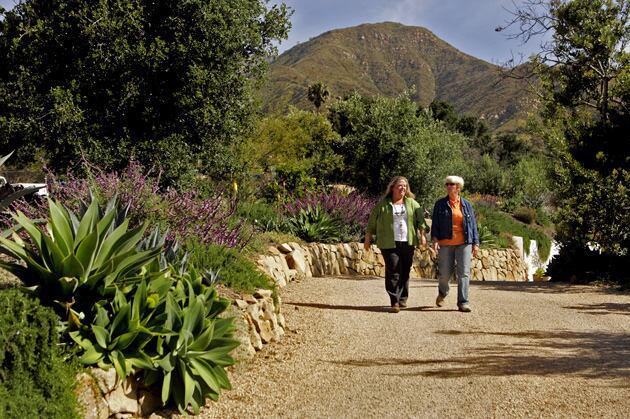
The entry drive is bordered by a new stone wall, spiky agave and more purple Mexican bush sage – a hummingbird favorite. (Al Seib / Los Angeles Times)
Advertisement
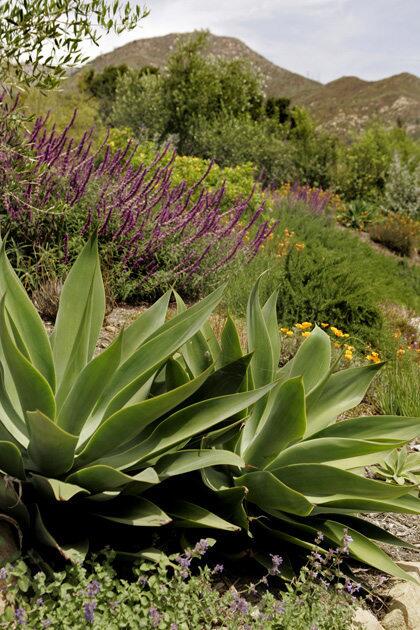
The agave and sage: low-water sculptural shape and colorful flowers. (Al Seib / Los Angeles Times)
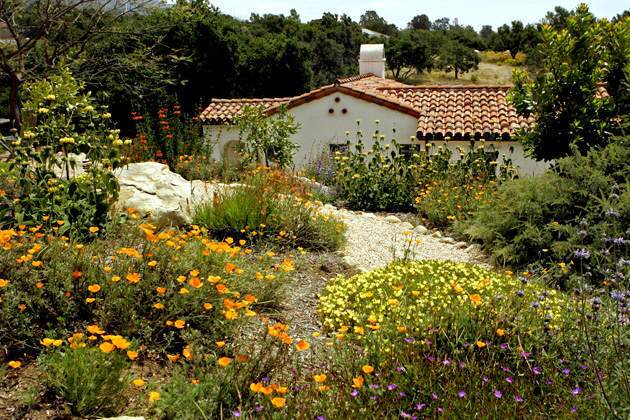
Orange California poppies and yellow tidy tips form a blanket of flowers. (Al Seib / Los Angeles Times)
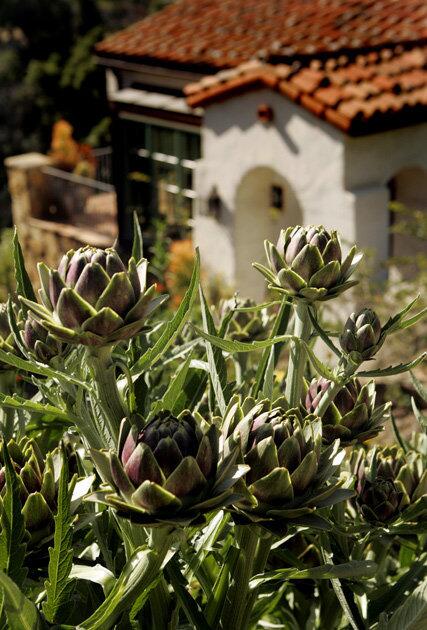
Artichokes add more sculptural forms to the garden, pictured here in late spring. For more home and garden profiles, check out our Homes of the Times galleries. You also can follow the home and garden scene on our L.A. at Home blog. (Al Seib / Los Angeles Times)



